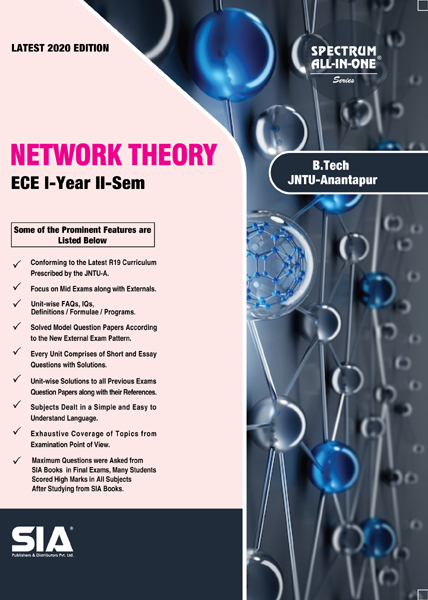

Note: Please check your Spam or Junk folder, in case you didn't receive the email with verification code.
SYLLABUS
UNIT-I
Introduction to Electrical Circuits Passive components and their V-I relations, Energy sources – Ideal, Non-ideal, Independent and dependent sources, Source transformation, Kirchhoff’s laws, Star-to-delta or delta-to-star transformation, Mesh analysis and nodal analysis problem solving, Super node and super mesh for D.C Excitations.
UNIT-II
Network Theorems Superposition theorem, Thevenin and Norton theorems, Maximum power transfer theorem, Reciprocity theorem, Millman theorem, Miller theorem, Tellegan’s theorem, Compensation theorem – Problem solving using dependent sources also, Duality and dual networks.
UNIT-III
Transients First order differential equations, Definition of time constants, R-L circuit, R-C circuit with D.C excitation, Evaluating initial conditions procedure, Second order differential equations, Homogeneous, Non-homogenous, Problem solving using R-L-C elements with D.C excitation and A.C (sinusoidal) excitation, Response as related to s-plane rotation of roots, Solutions using Laplace transform method.
UNIT-IV
Resonance and Coupled Circuits Self inductance, Mutual inductance, Dot rule, coefficient of coupling, Analysis of multi-winding coupled circuits, Series and parallel connection of coupled inductors. Resonance Introduction, Definition of Q, Series resonance, Bandwidth of series resonance, Parallel resonance, Condition for maximum impedance, Current in anti resonance, Bandwidth of parallel resonance, General case resistance present in both branches, Anti resonance at all frequencies.
UNIT-V
Two port Networks and Network functions Two port networks, Relationship of two port variables, Impedance parameters, Admittance parameters, Transmission parameters, Hybrid and inverse hybrid parameters, Relationship between parameters, Interconnection of two port networks. Concept of complex frequency, Driving point and transfer functions for one port and two port network, Pole and zeros of network functions, Restriction on pole and zero locations of network function.
 No Preview is available for this book
No Preview is available for this book

 Get 100 instant uPoints on the purchase of Rs.100 or above for each order.
Get 100 instant uPoints on the purchase of Rs.100 or above for each order.
CategoriesEngineering

Format EPUB

TypeeBook